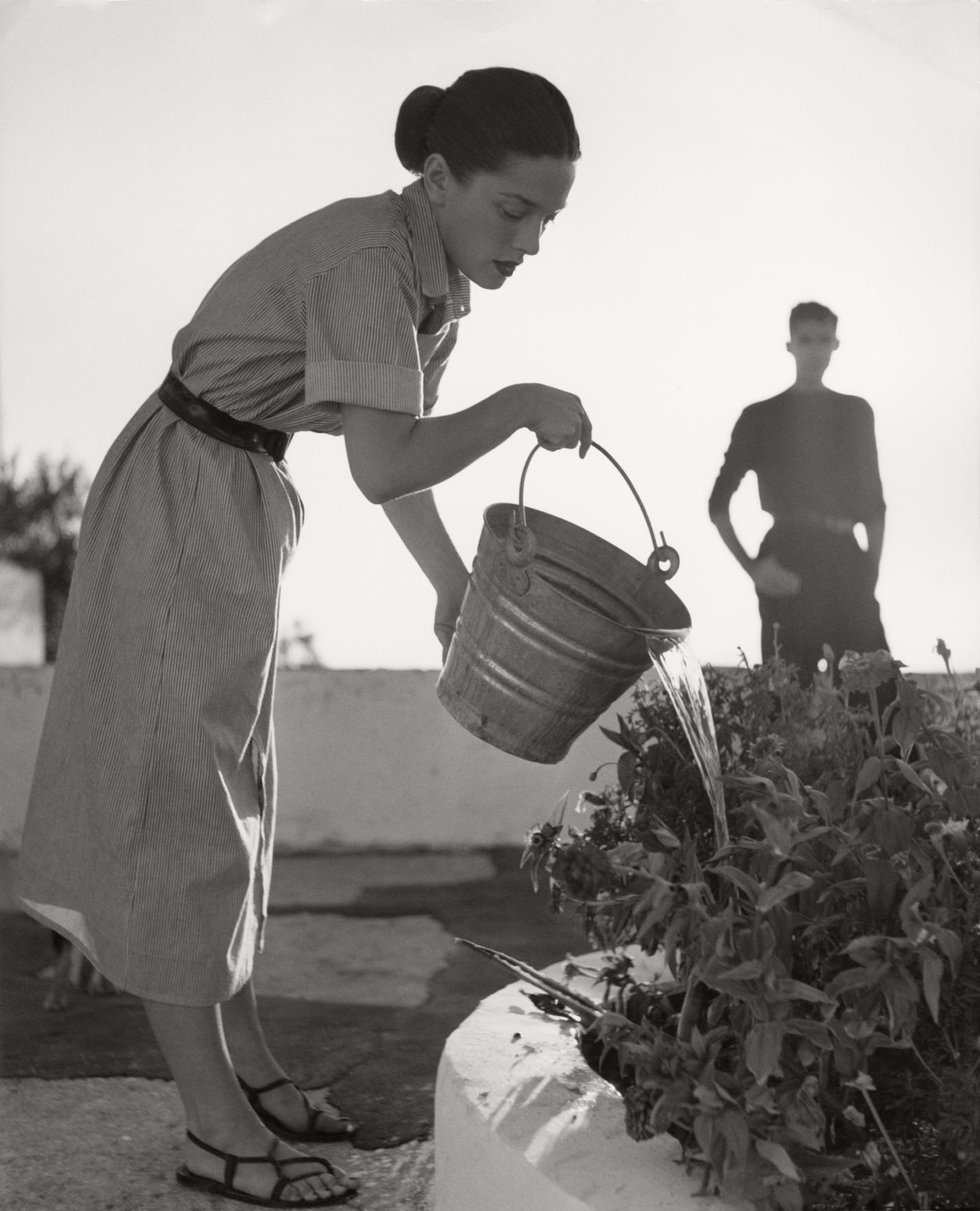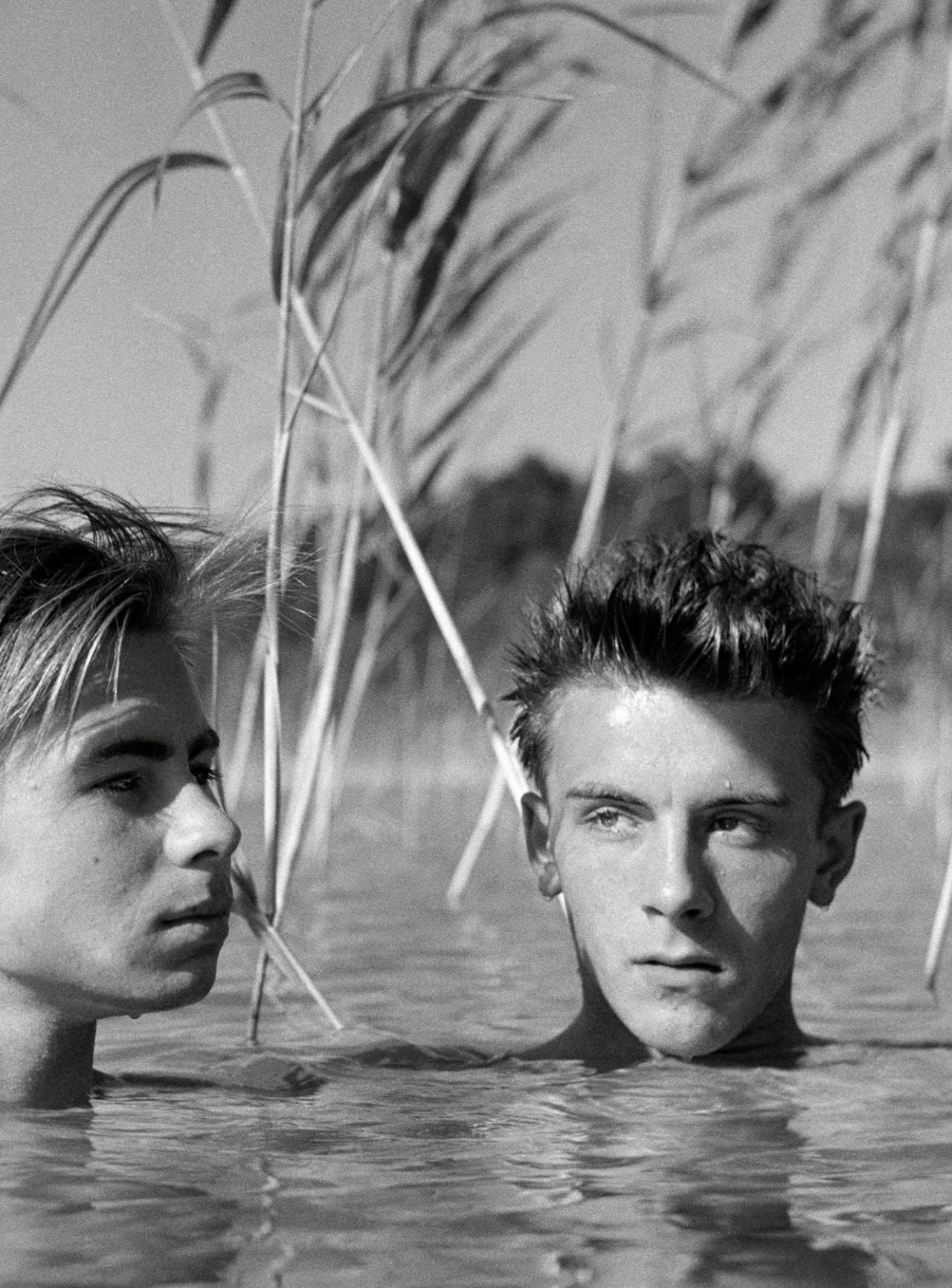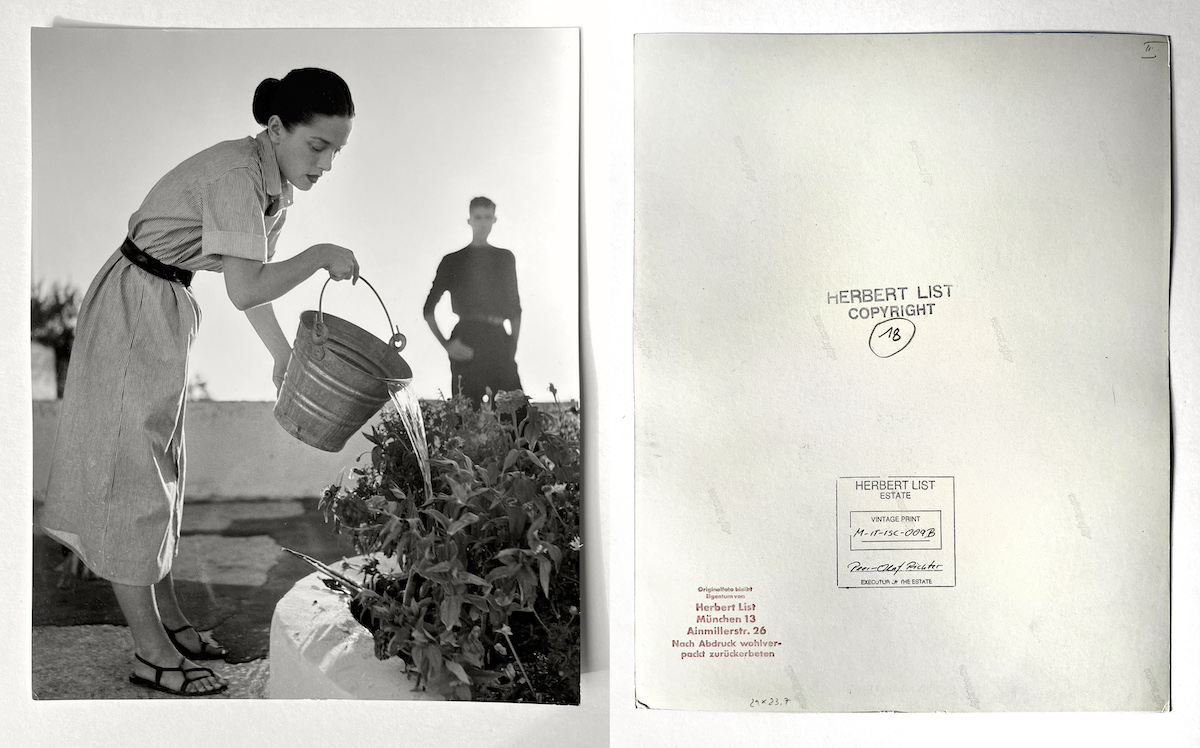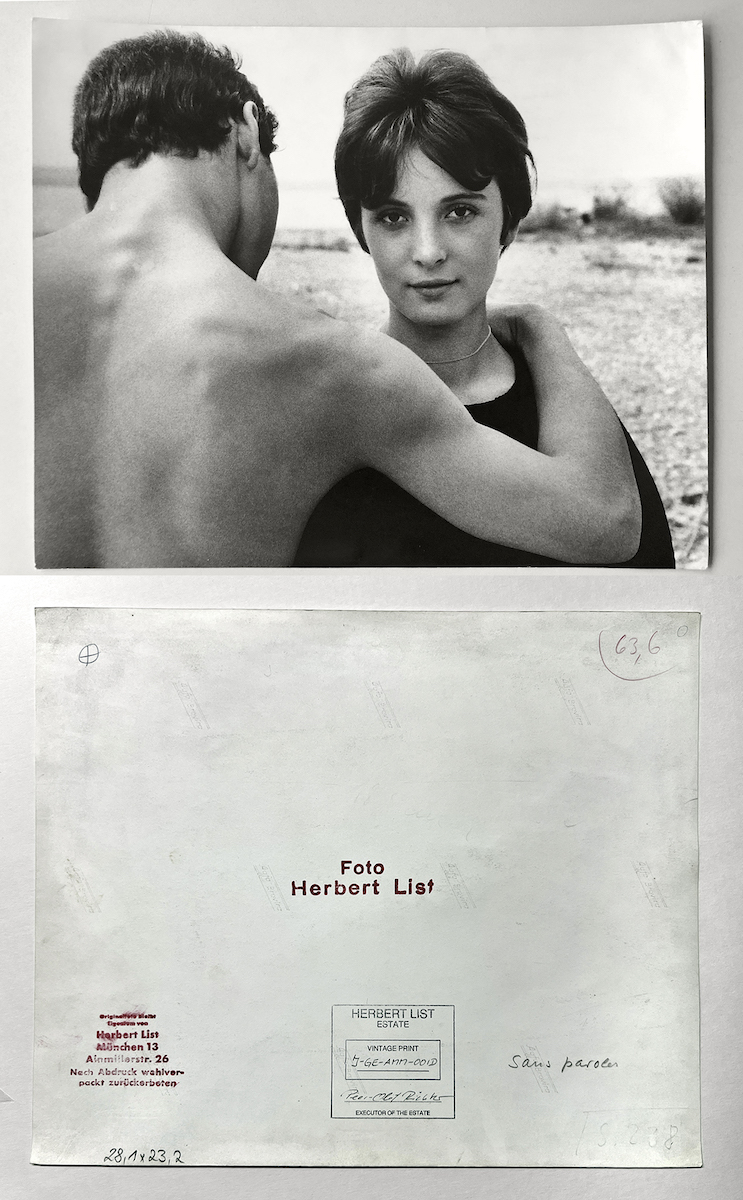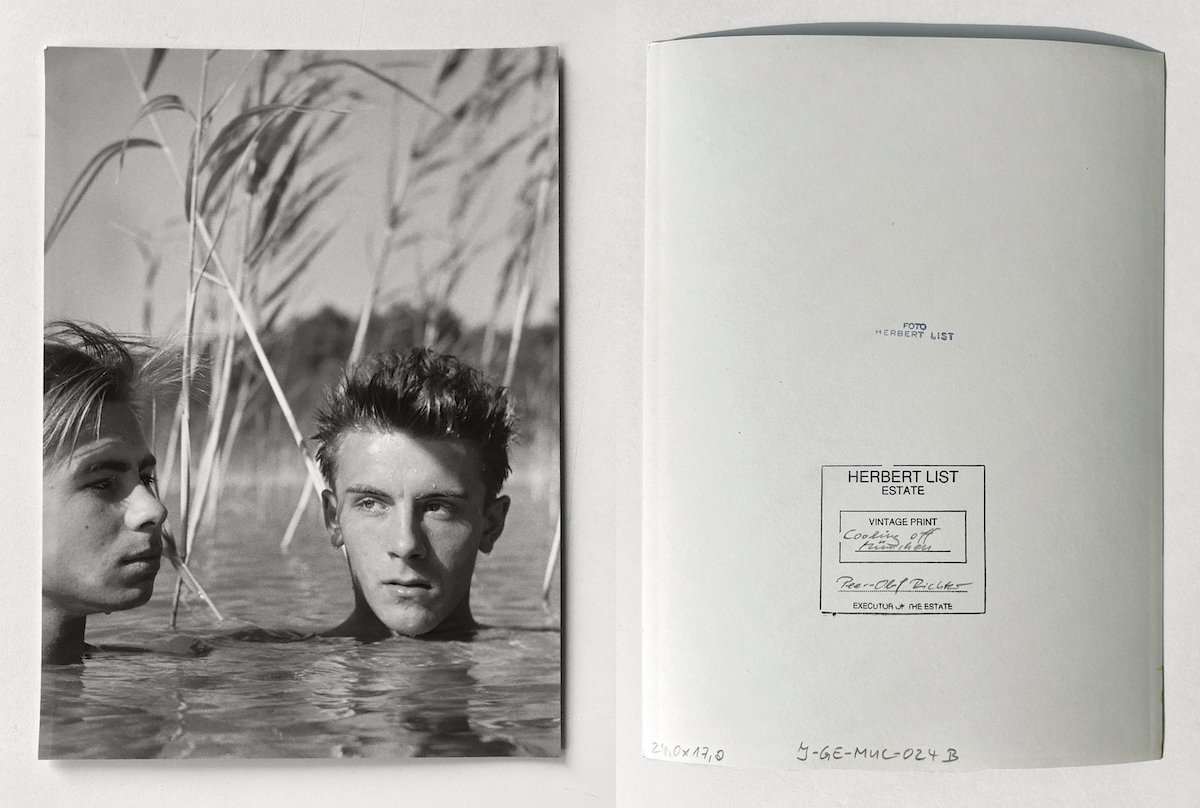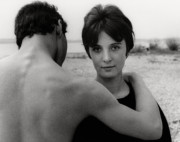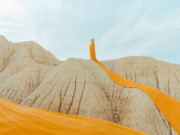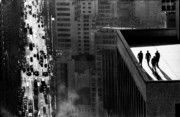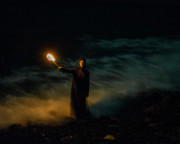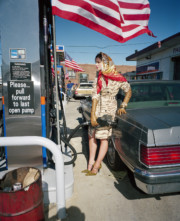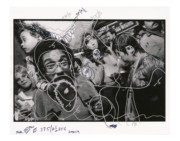Herbert List’s Couples, In Three Vintage Prints
Ahead of The Photography Show presented by AIPAD in New York this April, Magnum Gallery Director Samantha McCoy speaks to Peer-Olaf Richter of the Herbert List Estate about three unique, vintage prints
“A photographer must first feel his way into his sitter’s personality, as far as it is manifested in his appearance,” Herbert List once wrote. “He will hardly be in a position to create a true likeness of someone to whom he has no relation at all.” At the end of the year 1950, List moved into a new apartment in Munich and set up his own darkroom. It is here that he produced many prints of the intimate and discerning portraits of artists, friends, and acquaintances that he encountered through his daily life in Germany and travels around the world.
Today, over 70 years later, Magnum Gallery Director Samantha McCoy speaks to Peer-Olaf Richter of the Herbert List Estate about three vintage prints from List’s collection, delving into the stories of the people in the images, and the beauty of the unique prints today.
Samantha McCoy: Could you tell us about these three specific works? Where were they taken and when? All three seem to feature pairs, or couples, could you tell us about this motif?
Peer-Olaf Richter: Since List is best known for his erotic images of young men and his stills symbolizing friendship by showing pairs of objects, I had the idea to explore a new territory with some less expected versions of pairs, strongly featuring women. All three photos are from the 1950s, shot near Munich and on Ischia. It was a time when the economy was on the up — especially in Germany and Italy. For List, it also coincided with the beginning of a very productive and optimistic period of production. So the settings of many of his images at this time mirror newfound prosperity, regained freedom to travel, and a fresh start after the hardship of war and postwar years.
But as we know, List’s images are hardly ever just happy and carefree. There is usually a sense of stillness, contemplation, or even melancholy present. This, I believe, comes from the stories behind all of the people we see in his pictures, since they are not models on a magazine shoot, but real friends that he knew. Their stories remind us of the subtext of sexism, homophobia, or unaccepted alternative lifestyles — a subtext that was rooted in the culture of the 1950s, just as much as Coca-Cola or Rock ‘n Roll.
Samantha McCoy: Let’s speak about “Couple at Lake Ammersee” (pictured above). I loved discussing the nuances of this photograph with you. The composition is so unique, especially for the time.
Peer-Olaf Richter: The formal aspect that only one person is facing the viewer, while we see the other in profile or only from the back, caught my attention. This kind of composition creates tension and invites us to ask about the relation of the two people we are seeing. Also, with the binary couples in these images, we see the women more clearly than the men.
A young woman from Munich is looking directly at us, dressed in a dark sweater which is covering everything below the neckline. The naked muscular back and arm of a man create a stark contrast. Think about it: in a more classical or straight image from the canon, this composition of the two bodies would have called for the opposite dressing: a fully clothed man covering a female nude, with just enough skin of the woman visible to titillate a male straight viewer. List’s version of the scene is twisted, presenting us with a choice: do we focus on the naked muscular back of a man or on a beautiful woman? So much for the viewing pleasure the photographer gives us with this unusual, maybe even queer, image. And what kind of look is the woman giving us? It is neither vapid nor insecure, but also not joyful or sad, but with a hint of a knowing smile.
When I met Lisa, who is the woman in the image, she recalled the thrill of leaving Munich on the weekend with List and his friends to hang out at the lakes around the city. Her parents however did not approve of her conduct with the gay artist and his alternative lifestyle. To her, it was an escape from the stuffy and bland routine that the 1950s had to offer for a young woman like her.
Samantha McCoy: And what about “Couple of Ischia,” (pictured below) which is one of my personal favorites?
Peer-Olaf Richter: Here, the breathtakingly beautiful actor and model Margery Brown occupies the foreground of the image while her handsome husband Carlyle remains a blurry figure in the back. So for one of the key images of his photo essay, Artists Prefer Forio, which focussed on painters spending the summer on the island of Ischia, List moves the painter to the sidelines and presents us his wife instead.
To me, such visual emphasis on one over the other invites questions on the relation between the two subjects in the image. It might be interesting to know that List had portrayed Carlyle Brown a good year prior as a half-nude seen through a dirty window of his studio in Rome. It seems as if there is a progression from the erotic softness of that view through the glass from that year to the blurry outline on Ischia in 1952. List probably knew that Carlyle strayed from his relationship with Margery in liaisons with other men, finally resulting in a divorce years later. Margery’s son also recalls that they cared deeply for each other, and remained friends. To me, feelings of care and hope, but also the distance and difficulty of such relationships at that time emanate from this image.
Samantha McCoy: Remind me when the works themselves were printed? And do we know by whom?
Peer-Olaf Richter: All three are prints of the 1950s. At the time, List was living in Munich’s historical artist district. Former residents like Wassily Kandinsky, Paul Klee or Alexej von Jawlenskyr had made the quarter famous before Munich turned into a Nazi stronghold during the Second World War. In the basement of his apartment building in the Ainmillerstraße 26, he opened his own darkroom that he later shared with another German photographer by the name of Stefan Moses who lived in the same building. When List was not working in the darkroom himself, he had friends and emerging photographers such as Max Scheler or Roger Fritz working for him.
"Images with a homo-erotic or queer subtext he carefully considered a peril — not for the photographer but for the people in the picture."
- Peer-Olaf Richter
The three are all vintage prints. Are there any interesting markings on the back that are worth discussing?
Peer-Olaf Richter: All three prints are marked and stamped a bit differently. The image with the artist couple on Ischia is part of a story and was meant for publication. It is print number 18 in a story called Artists Prefer Forio, which, as I mentioned, is a story in which List captured life in the artist colony in Forio, a town just off the Mediterranean island of Ischia.
The “Couple at Lake Ammersee” and the boys in the water, “Cooling Off,” do not belong to a story, but are results of Herbert’s diary-like approach to documenting life with his friends, especially outdoors. The “Couple at Ammersee” print was also prepared for publication, and stamped ‘to be returned after printing.’ List has written ‘Sans Paroles’ (‘Without words’), on the back of the print.
The two boys in the water were from List’s private collection, only stamped ‘Foto Herbert List.’ It is unlikely that he had any publication for this image in mind. While some of his first internationally published images of the 1930s were male nudes, he did not continue to publish them during the war or after. For him the allure of doing such a publication was limited. Before the war, his erotic images made it into the prestigious avant-garde publication Formes Nues together with images of Brassai, Moholy-Nagy and Man Ray. The fate of a book dedicated to the male physique in the 1950s though was a distribution under the counter, in erotic bookstores or by mail order only. And images with a homo-erotic or queer subtext he carefully considered a peril — not for the photographer but for the people in the picture. And unfortunately, that threat did not change until much later that century.
The three vintage prints, as well as the wider curation of prints for The Photography Show, are available to acquire. For inquiries, please contact gallery@magnumphotos.com.



